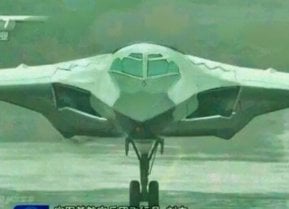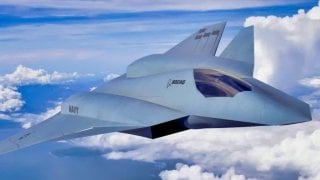The U.S. Navy's F/A-XX Stealth Fighter Has Money Problems
The U.S. Navy's recent decision to reallocate about $1 billion in funds earmarked for the development of the F/A-XX, a sixth-generation strike fighter, highlights the ongoing tension between maintaining current military readiness and investing in future capabilities.
Summary: The U.S. Navy's recent decision to reallocate about $1 billion in funds earmarked for the development of the F/A-XX, a sixth-generation strike fighter, highlights the ongoing tension between maintaining current military readiness and investing in future capabilities. This move, driven by budgetary constraints and the Fiscal Responsibility Act of 2023, delays significant progress on the F/A-XX, impacting the timelines for potential contracts with major aerospace contractors like Boeing, Lockheed Martin, and Northrop Grumman. The Navy's prioritization of current operational readiness over long-term modernization efforts, despite a defense spending cap that significantly exceeds that of its nearest competitors, China and Russia, underscores the strategic challenges faced in balancing immediate needs with future threats.
F/A-XX Has a Money Challenge
The U.S. Navy announced yesterday that it will withhold about $1 billion in funds that were earmarked for the F/A-XX project. Navy leadership said the decision to reallocate funds away from the effort to develop a sixth-generation strike fighter reflects the priority of current readiness levels over modernization efforts.
“The funding delay means any major decisions about awarding a contract on the program will be kicked down the road,” Breaking Defense reported, “unwelcome news to the country’s top three aerospace prime contractors – Boeing, Lockheed Martin and Northrop Grumman – which have all signaled their intent to fight for a production contract.”
“We’re absolutely committed to the capacity and lethality of the carrier wing,” said Rear Adm. Ben Reynolds, deputy assistant secretary of the Navy for budget. “The capacity, the firepower of the air wing is orders of magnitude above anything else that [the Defense Department] has.”
Reassessing the FY25 Budget
The F/A-XX was originally projected to receive about $1.5 billion in Fiscal Year 2025, but constraints from the Fiscal Responsibility Act of 2023 “forced the Navy to disperse much of that money into future budgets,” so the F/A-XX was slashed.
“The FRA, signed into law last June, provides an FY25 defense spending cap of $895 billion, and the Navy and Marine Corps’ share of that topline under the newly-released budget is $257.6 billion,” Breaking Defense added in its report.
For perspective, consider that the $895 billion defense spending cap is about three times higher than the military spending of second-place China, and ten times as much as the world’s third-biggest defense spender, Russia.
“In terms of what comes at the top of the list, it is readiness. It is people. It is the today issues that we have to get on top of,” Under Secretary of the Navy Erik Raven told reporters. “Where our guidance directs us to take risks is in future modernization.”
What is the F/A-XX?
The F/A-XX is a next-generation strike fighter project that will eventually phase out the F/A-18 Super Hornet. Details about the F/A-XX’s specifications have not been made public. Pentagon officials have suggested that the Navy and Air Force will not collaborate on a joint design as they did with the F-35 Joint Strike Fighter.
Last summer, a spokesperson said the Navy had “identified operational reach, capacity, long range kill chains, autonomy, and next generation survivability as key enablers in the Air Wing of the Future and supporting Family of Systems.” That’s a lot of military-industrial marketing-speak, but we can expect the F/A-XX to be significantly more advanced than the F-22 or F-35.
The Navy has pared down its F/A-18 purchases with the expectation that the F/A-XX will come online soon. With F/A-XX development delayed, the decision to stop buying new F/A-18s will probably face renewed scrutiny.
About the Author: Harrison Kass
Harrison Kass is a defense and national security writer with over 1,000 total pieces on issues involving global affairs. An attorney, pilot, guitarist, and minor pro hockey player, Harrison joined the US Air Force as a Pilot Trainee but was medically discharged. Harrison holds a BA from Lake Forest College, a JD from the University of Oregon, and an MA from New York University. Harrison listens to Dokken.


